Are Morrisons’ changes to Safeway going down well, asks Elaine Watson
Enjoying the change? It all depends where you live and how old you are,according to exclusive new research from HI Europe.Five months after Morrisons took the reins at Safeway, it has slashed prices across the board,pumped millions into press and TV advertising, introduced its own label into almost every category and hung yellow signs from the ceiling in every Safeway store reminding shoppers that the chain is under new ownership.
But are customers impressed? HI Europe’s survey of 1,700 shoppers across the country paints a mixed picture,with the vast majority either indifferent or oblivious to the massive changes under way at Safeway.
Predictably enough, shoppers in Yorkshire and the north of England were the most positive about the changes, while those less familiar with the Morrisons brand in southern England and Wales were the most negative.
However, if perceptions count for anything, one thing that Sir Ken Morrison can take from this survey is that younger and more affluent Safeway shoppers are enjoying the change considerably less.
While he will be encouraged that a quarter of Safeway shoppers felt things were getting better compared to 8% who felt things were getting worse, only 8% of 16-24 year olds felt Safeway had improved under Morrisons, compared to a massive 40% of 55 to 64-year-olds.
The same pattern emerged when shoppers were asked whether the Morrisons takeover of Safeway was a good thing,with just a fifth of 16 to 24- year-olds in agreement compared to a third of the over-50s.
The survey also revealed a marked difference in attitude between socioeconomic groups,with lingering loyalty towards the Safeway brand far more evident among Londoners and AB shoppers.Moreover,while only 3% of C2 shoppers felt that the shopping experience at Safeway had got worse, this figure rose to 15% among AB shoppers.
So should Sir Ken get more sexy and upmarket or is he wise to leave well alone and hope that southerners,the young,the trendy and the affluent will warm to his brand over time?
As the recent furore caused by his ‘southerners are lazy’ comments demonstrated,he could risk antagonising some shoppers if he overplays the honest northerner card,says PA Consulting’s Dr Mark Dorgan.
“Morrisons could learn a lot from Safeway,which for all of its pricing issues, had a reputation for innovation and still clearly has some brand equity in the south.And that’s where Morrisons has to work the hardest.”
For all its old-fashioned appeal, however,Morrisons stores actually attract more younger shoppers than Safeway’s, says TNS Superpanel communications director Edward Garner.
“The biggest shoppers at Morrisons are the under-27s and those in a household of three to five rather than singles.
Safeway,by contrast,has an older profile.”
Despite dissatisfaction from certain groups in the survey, its overall message is positive, says HI Europe’s Tracy Thorne.
“The positive thing is that so many shoppers felt things had got better.
“And of those,91% said the main reason was because Morrisons offered value for money. But it’s not all good news.There are a lot of disgruntled Safeway shoppers out there and the key problems seem to be availability of specific items and ranging concerns, even if these are short-term issues.”
Shopper attitudes to their Safeway becoming a Morrisons
>>Survey of 1,704 shoppers
How do you feel about the rebranding of your Safeway?
(479 Safeway shoppers)
Not sure/not bothered 41%
In favour of conversion to Morrisons 38%
Prefer to stay Safeway, but will shop there regardless 11%
In favour of conversion to Morrisons 5%
Might stop shopping there when it changes to Morrisons 5%
How is the shopping experience now?
(479 Safeway shoppers)
Better 23%
Worse 8%
No change 57%
Not sure 12%
What things have got worse?
(only asked shoppers that said it had got worse)
Availability of specific lines 57%
Range of brands 46%
Range of fresh fruit & veg 46%
Overall availability 40%
Quality 39%
Value for money 30%
Service 24%
Own label range 22%
Fresh meat & fish range 10%
Other 12%
What things have got better?
(only asked shoppers that said it had got better)
Availability of specific lines 24%
Range of brands 31%
Range of fresh fruit & veg 26%
Overall availability 31%
Quality 33%
Value for money 91%
Service 28%
Own label range 31%
Fresh meat & fish range 16%
Other/not sure 3%
Overall, is the Morrisons takeover..
A good thing? 26%
A bad thing? 4%
Not sure/not bothered 70%
Has the Morrisons takeover changed your shopping behaviour?
Yes - have reduced shopping I do at Safeway 4%
Yes - have increased shopping now do at Safeway 7%
Not made any difference 89%
Have you seen any television advertising for Morrisons in recent months?
Yes 43%
No 57%
Are you aware that Morrisons has bought Safeway?
Yes 85%
No 15%
Which is the stronger brand?
Safeway 19%
(compared to 29% in Feb 2004)
Morrisons 34%
(compared to 33% in Feb 2004)
Both strong 18%
(compared to 10% in Feb 2004)
Neither particularly strong 14%
(compared to 9% in Feb 2004)
Not sure 15%
(compared to 19% in Feb 2004)
Source: NATIONAL ONLINE SURVEY CONDUCTED BY HI EUROPE JULY 28 TO AUGUST 4, AMONG A REPRESENTATIVE SURVEY OF 1,704 PRINCIPAL SHOPPERS (ADULT SHOPPERS SOLELY OR JOINTLY RESPONSIBLE FOR DOING THE MAIN GROCERY SHOP IN A HOUSEHOLD)
Enjoying the change? It all depends where you live and how old you are,according to exclusive new research from HI Europe.Five months after Morrisons took the reins at Safeway, it has slashed prices across the board,pumped millions into press and TV advertising, introduced its own label into almost every category and hung yellow signs from the ceiling in every Safeway store reminding shoppers that the chain is under new ownership.
But are customers impressed? HI Europe’s survey of 1,700 shoppers across the country paints a mixed picture,with the vast majority either indifferent or oblivious to the massive changes under way at Safeway.
Predictably enough, shoppers in Yorkshire and the north of England were the most positive about the changes, while those less familiar with the Morrisons brand in southern England and Wales were the most negative.
However, if perceptions count for anything, one thing that Sir Ken Morrison can take from this survey is that younger and more affluent Safeway shoppers are enjoying the change considerably less.
While he will be encouraged that a quarter of Safeway shoppers felt things were getting better compared to 8% who felt things were getting worse, only 8% of 16-24 year olds felt Safeway had improved under Morrisons, compared to a massive 40% of 55 to 64-year-olds.
The same pattern emerged when shoppers were asked whether the Morrisons takeover of Safeway was a good thing,with just a fifth of 16 to 24- year-olds in agreement compared to a third of the over-50s.
The survey also revealed a marked difference in attitude between socioeconomic groups,with lingering loyalty towards the Safeway brand far more evident among Londoners and AB shoppers.Moreover,while only 3% of C2 shoppers felt that the shopping experience at Safeway had got worse, this figure rose to 15% among AB shoppers.
So should Sir Ken get more sexy and upmarket or is he wise to leave well alone and hope that southerners,the young,the trendy and the affluent will warm to his brand over time?
As the recent furore caused by his ‘southerners are lazy’ comments demonstrated,he could risk antagonising some shoppers if he overplays the honest northerner card,says PA Consulting’s Dr Mark Dorgan.
“Morrisons could learn a lot from Safeway,which for all of its pricing issues, had a reputation for innovation and still clearly has some brand equity in the south.And that’s where Morrisons has to work the hardest.”
For all its old-fashioned appeal, however,Morrisons stores actually attract more younger shoppers than Safeway’s, says TNS Superpanel communications director Edward Garner.
“The biggest shoppers at Morrisons are the under-27s and those in a household of three to five rather than singles.
Safeway,by contrast,has an older profile.”
Despite dissatisfaction from certain groups in the survey, its overall message is positive, says HI Europe’s Tracy Thorne.
“The positive thing is that so many shoppers felt things had got better.
“And of those,91% said the main reason was because Morrisons offered value for money. But it’s not all good news.There are a lot of disgruntled Safeway shoppers out there and the key problems seem to be availability of specific items and ranging concerns, even if these are short-term issues.”
Shopper attitudes to their Safeway becoming a Morrisons
>>Survey of 1,704 shoppers
How do you feel about the rebranding of your Safeway?
(479 Safeway shoppers)
Not sure/not bothered 41%
In favour of conversion to Morrisons 38%
Prefer to stay Safeway, but will shop there regardless 11%
In favour of conversion to Morrisons 5%
Might stop shopping there when it changes to Morrisons 5%
How is the shopping experience now?
(479 Safeway shoppers)
Better 23%
Worse 8%
No change 57%
Not sure 12%
What things have got worse?
(only asked shoppers that said it had got worse)
Availability of specific lines 57%
Range of brands 46%
Range of fresh fruit & veg 46%
Overall availability 40%
Quality 39%
Value for money 30%
Service 24%
Own label range 22%
Fresh meat & fish range 10%
Other 12%
What things have got better?
(only asked shoppers that said it had got better)
Availability of specific lines 24%
Range of brands 31%
Range of fresh fruit & veg 26%
Overall availability 31%
Quality 33%
Value for money 91%
Service 28%
Own label range 31%
Fresh meat & fish range 16%
Other/not sure 3%
Overall, is the Morrisons takeover..
A good thing? 26%
A bad thing? 4%
Not sure/not bothered 70%
Has the Morrisons takeover changed your shopping behaviour?
Yes - have reduced shopping I do at Safeway 4%
Yes - have increased shopping now do at Safeway 7%
Not made any difference 89%
Have you seen any television advertising for Morrisons in recent months?
Yes 43%
No 57%
Are you aware that Morrisons has bought Safeway?
Yes 85%
No 15%
Which is the stronger brand?
Safeway 19%
(compared to 29% in Feb 2004)
Morrisons 34%
(compared to 33% in Feb 2004)
Both strong 18%
(compared to 10% in Feb 2004)
Neither particularly strong 14%
(compared to 9% in Feb 2004)
Not sure 15%
(compared to 19% in Feb 2004)
Source: NATIONAL ONLINE SURVEY CONDUCTED BY HI EUROPE JULY 28 TO AUGUST 4, AMONG A REPRESENTATIVE SURVEY OF 1,704 PRINCIPAL SHOPPERS (ADULT SHOPPERS SOLELY OR JOINTLY RESPONSIBLE FOR DOING THE MAIN GROCERY SHOP IN A HOUSEHOLD)







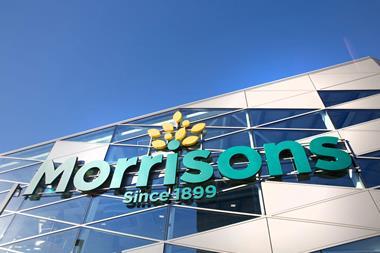
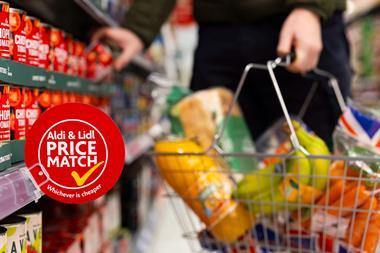
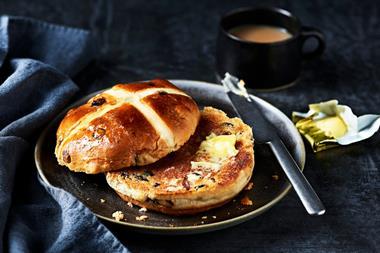
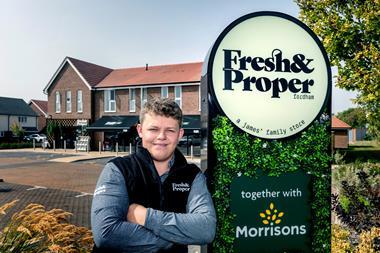


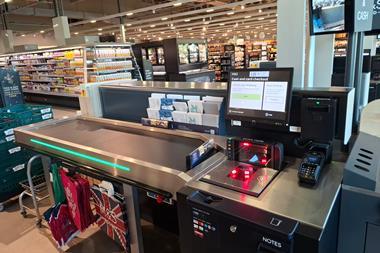
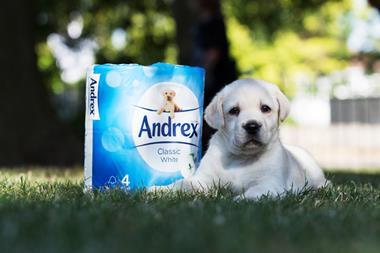
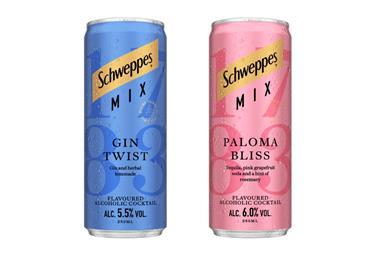


No comments yet